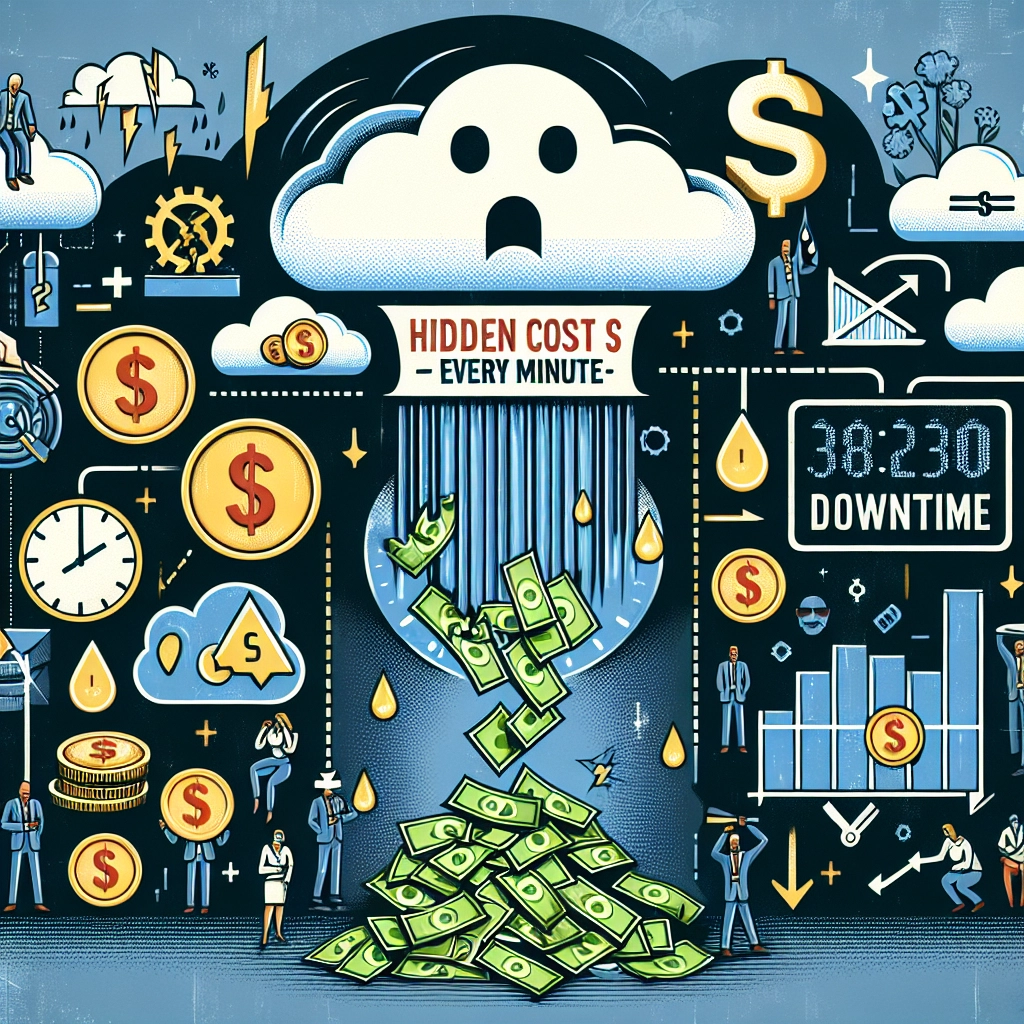Public cloud downtime has significant financial and reputational consequences that many businesses underestimate. As companies grow increasingly dependent on hyperscale cloud platforms for everything from e-commerce to healthcare, the assumption that these systems guarantee constant availability can lead to detrimental misconceptions.
When a cloud outage occurs, the immediate costs can be staggering. Just one minute of downtime can cost large businesses thousands of dollars, and in some industries, like finance and retail, this can escalate to millions within an hour. The visible impact of lost transactions and idle employees is only the surface of the issue; the deeper hidden costs include delayed projects, diminished customer trust, regulatory fines, and the arduous process of regaining a tarnished brand reputation.
Cloud outages not only disrupt operations but also affect every aspect of a business reliant on cloud services—impacting analytics, customer applications, logistical networks, and sales platforms. The interconnected nature of public cloud environments means that a technical issue can potentially impact thousands of users simultaneously. Moreover, the complexity of contemporary IT architectures means that a problem in one service can cause cascading failures across dependent systems. Many organizations have become so entrenched with a specific vendor that shifting workloads in a crisis can be logistically and financially prohibitive.
The costs associated with downtime can include lost revenue from failed transactions during peak periods, recovery expenses such as data restoration and overtime for IT staff, and potential fines for violations in sectors subject to strict regulations. Meanwhile, businesses that engage directly with customers risk losing years of loyalty with just one significant service upset.
Despite the substantial investments public cloud providers make in infrastructure resilience, they remain vulnerable to cyberattacks, configuration errors, software bugs, and human mistakes. The intricacies of these hyperscale systems mean that even minor oversights can have substantial repercussions. Often, compensation offered through service-level agreements (SLAs) fails to cover the extensive losses incurred.
Preparing for potential outages has become critical for businesses. This preparation must extend beyond disaster recovery to encompass proactive strategies such as ensuring redundancy, distributing workloads across multiple clouds or geographic locations, and safeguarding critical data by replicating it during service failures.
Investments in comprehensive observability across various layers can help organizations detect anomalies early and resolve issues before they impact users. Some businesses are adopting hybrid and multi-cloud architectures to combine the reliability of private systems with the flexibility of public clouds. Such strategies help ensure faster recovery during outages and reduce reliance on single vendors.
Additionally, accurately assessing the financial implications of downtime empowers organizations to allocate appropriate budgets toward enhancing resilience. By quantifying potential risks, businesses can justify the necessary expenditures on disaster recovery, failover capacities, and fault-tolerant designs.
Ultimately, the discourse surrounding public cloud outages is a strategic one. In today’s market, resilience serves as a differentiator; consumers are intolerant of repeated failures but may overlook brief delays. Regulatory bodies demand concrete actions following disruptions, reinforcing the expectation for constant reliability—a new currency of trust in an age marked by real-time analytics and continuous operations.
Public clouds, with their unparalleled scale and agility, have transformed industries. However, unchecked dependence on these systems exposes businesses to significant risks. The true cost of outages is measured not only in financial terms but also in lost time, opportunities, and consumer confidence. Companies that recognize these challenges and adequately prepare are poised to not only endure future outages but also emerge from them stronger and more resilient.
Welcome to DediRock, your trusted partner in high-performance hosting solutions. At DediRock, we specialize in providing dedicated servers, VPS hosting, and cloud services tailored to meet the unique needs of businesses and individuals alike. Our mission is to deliver reliable, scalable, and secure hosting solutions that empower our clients to achieve their digital goals. With a commitment to exceptional customer support, cutting-edge technology, and robust infrastructure, DediRock stands out as a leader in the hosting industry. Join us and experience the difference that dedicated service and unwavering reliability can make for your online presence. Launch our website.

